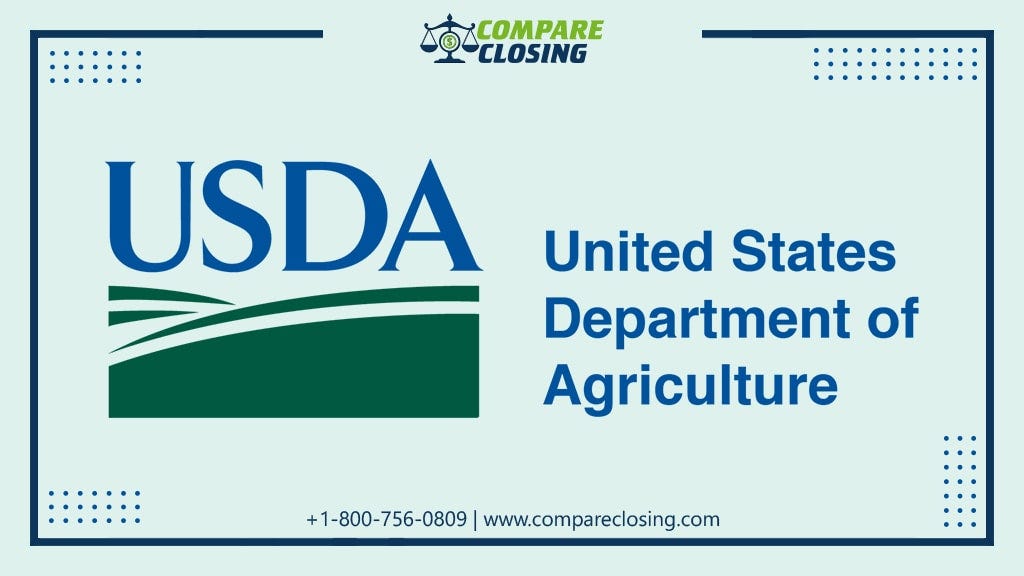
Introduction To USDA Guarantee Fees
If an individual wants to live outside the city limits or in the suburban area they might want to consider a USDA loan, especially if they can’t get a conventional loan.
USDA loans are mortgages with zero down payment, designed for rural homebuyers.
The core basis of a USDA loan is USDA guarantee fees. To fully understand USDA loans, let’s understand USDA guarantee fees and look at ways to check if one can qualify for a USDA loan.
More About What Is USDA Loan Guarantee Fees
Mortgage loans that help prospective homeowners buy homes in rural, and in some cases, suburban areas are termed as USDA loans.
The USDA loans are backed by the U.S. Department of Agriculture (USDA) meaning that the loan is insured or guaranteed by the government.
This doesn’t mean that a loan is issued by the government, it is still issued by a lender. However, if the borrower fails to repay their loan then the USDA protects the mortgage lender against losses.
What is the benefit to the government in this, while backing the homeowner, who will pay lower interest rates and no down payment?
The borrower will have to pay closing costs while seeking a USDA loan.
When a borrower gets a USDA loan, they pay an upfront guarantee fee and annual fee. Usually, the lender passes the nonrefundable upfront fee cost on to the borrower.
The process of USDA mortgage payment and functions similarly to mortgage insurance for a USDA loan is referred by USDA guarantee fees.
For 2021, the upfront USDA guarantee fee is 1% of the loan amount, and the annual fee is 0.35% of the loan amount.
Knowing The Process To Qualify For A USDA loan
Households with low- to moderate-income and a low debt-to-income (DTI) ratio can get USDA loans. The borrowers should also meet some additional qualifications like
- The borrowers should have citizenship or be legal permanent residents in the U.S.A.
- The borrowers must have a credit score of at least 640. However, they could still qualify even with a lower score or limited credit history for which they need to check with their lender to know more about these limits.
- The borrowers must have a stable and dependable income, the USDA considers the income of all the adults living in the home.
- The borrowers must not have a history of any late payments or collections.
- The adjusted household income of the borrowers should be equal to or less than 115% of the area’s median income.
- The borrowers must also choose to live in the home as their primary residence and it should fall under the qualified rural area.
Along with these requirements by the USDA’s Rural Development program, the lenders may set other additional requirements.
The borrowers can also want to look at the other different types of USDA loans, like the USDA guaranteed loan and the USDA direct loan. Let us also look at the qualifications of each:
Guaranteed USDA loan: The borrowers adjusted household income can’t exceed more than 115% of the median family income in the designated rural area where they prefer to live.
And this household income includes the combined income of all the adults of the household.
Direct USDA loan: The borrowers with low- to very low-income can take help from the direct USDA loan. Qualifying borrowers’ income must fall at or below the low-income limit in a deligated area.
The borrowers cannot obtain a loan from other resources, and they need to treat the property as their primary residence.
The home must meet the criteria as under 2,000 square feet or less and should stay within applicable loan limits for the area, it cannot be planned for income-producing activities and cannot have an in-ground swimming pool.
The borrowers can seek help from lenders to determine which type of USDA loan they can get.
How Much Does The Upfront Guarantee Fee cost?
A borrower must pay an upfront guarantee fee in order to get a USDA loan. This fee is mostly added to the initial loan amount and paid at closing.
In 2021 the new USDA guarantee fee costs 1% of the loan amount. For instance, if a borrower has a home loan of $100,000, then their total loan amount would become $101,000. Compared to previous years this amount has dropped considerably.
What Is Annual USDA Loan Fee?
The annual fee is usually financed into the borrower’s loan. Currently, for 2021, the annual fee costs 0.35% of the loan amount.
The borrower needs to pay this fee monthly along with their monthly mortgage payment throughout the life of their loan.
How does this work on your loan amount? For instance, if the loan amount borrowed is $200,000.
Then the monthly payment would be $58.33 for their monthly loan fee.
This amount too like the upfront guarantee fee has dropped significantly in comparison to previous years.
Conclusion
When considering the USDA Home Loans And Guarantee Fees, the borrowers must think about whether they want to get a USDA loan, because it’s important to understand that they must qualify for the USDA home loan as one cannot simply apply for a USDA loan.
A borrower must also understand the fees involved during the USDA home loan process.
Mortgage loans that help prospective homeowners who meet specific qualifications to be able to buy homes in rural and in some suburban areas are called as
USDA loans. Just so the lender can feel more confident in taking lower-income home buyers with low DTI ratios, the USDA guarantees the USDA loans.
When a borrower gets a USDA loan, then they will pay both an initial guarantee fee and an annual fee. This year the upfront guarantee fee is 1% of the loan amount and the annual fee is 0.35% of the loan amount.
https://www.compareclosing.com/blog/what-are-usda-guarantee-fees/
Comments
Post a Comment